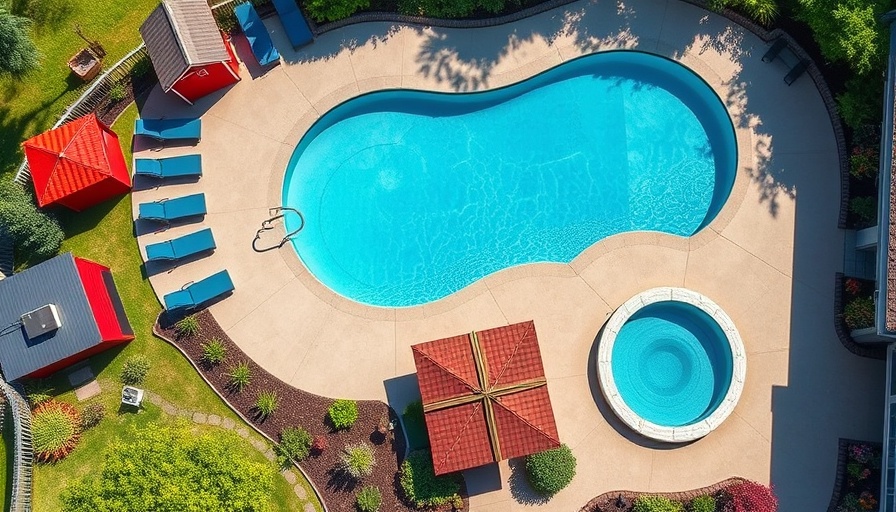
Understanding the Revised ANSI Standard for Swimming Pools and Spas
The recent approval of the ANSI/APSP/ICC/NPC-12 2025 American National Standard for the Plastering of Swimming Pools and Spas (often referred to as PHTA-12) represents a pivotal moment in ensuring quality and safety in the pool and spa industry. As the Pool & Hot Tub Alliance (PHTA), together with other organizations, takes significant steps forward, industry professionals and property owners alike should take note of these important updates that impact compliance and quality assurance.
Why This Matters to Homeowners and Property Managers
For homeowners and small commercial property owners, adhering to the updated standards means ensuring safety and longevity in the design and maintenance of aquatic facilities such as swimming pools and spas. The PHTA-12 standard outlines clear guidelines that detail the materials and methodologies for plastering, which are integral parts of creating safe and functional water spaces. By following these standards, property owners can maintain aesthetic value while promoting durability.
Collaboration Ensuring Excellence
The process that led to the revisions of the PHTA-12 standard involved collaboration among various industry stakeholders, including the PHTA, the National Plasterers Council (NPC), and the International Code Council (ICC). This multifaceted approach ensures that the insights and experiences of a diverse group of experts shape the standards that govern the industry. Sabeena Hickman, PHTA CEO, expressed gratitude for this collaboration, emphasizing its role in achieving quality and safety throughout the industry.
Details of the Standard's Changes
The latest version of the PHTA-12 standard includes new content that reflects current industry practices and clarifies previous sections, ensuring applicability for both public and residential pools and spas. As part of their commitment to excellence and safety, the standard now details non-structural cementitious finish coating materials and their proper application techniques. Understanding these updates is essential for property managers and homeowners who oversee the construction and maintenance of swimming pools to ensure compliance and enhance the safety of their aquatic spaces.
Looking Ahead: Future Trends and Safety Standards
As we look towards the future of the swimming pool and spa industry, these updated standards signify a shift towards greater oversight and improved safety protocols. Professionals in the field must stay informed about these updates to maintain compliance and protect the interests of their clients. The ongoing evolution of standards like PHTA-12 contributes to not just improved safety, but also impacts market trends, including the adoption of innovative materials and technologies that enhance the efficiency and eco-friendliness of aquatic facilities.
Your Rights and Responsibilities as a Consumer
As a homeowner or property owner, it’s crucial to recognize your rights and responsibilities when it comes to maintaining your swimming pool or spa. Understanding the standards you should expect from contractors not only safeguards your investment but also enhances the overall experience for users. Familiarizing yourself with these guidelines can empower you in making informed decisions regarding renovations, repairs, and maintenance.
Conclusion: Staying Informed on Industry Changes
As the landscape of the swimming pool and spa industry evolves, it’s essential for homeowners and property managers to stay updated on regulatory changes and best practices. By engaging with updated standards like PHTA-12, property owners can ensure that their aquatic spaces remain safe, attractive, and in-line with current industry expectations.
By actively participating in the conversation of these changes, you can keep your pool or spa in prime condition, elevating your property’s value and safety. Stay informed about ongoing updates and explore how these changes can benefit your property management practices.
 Add Row
Add Row 
 Add
Add 


 Add Row
Add Row  Add
Add 
Write A Comment